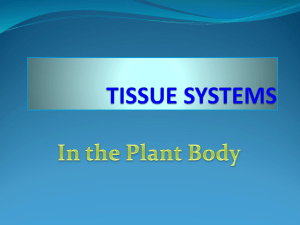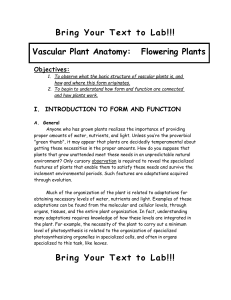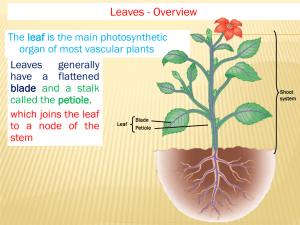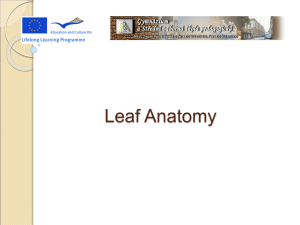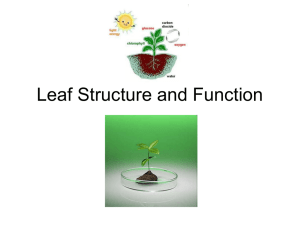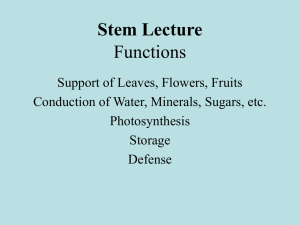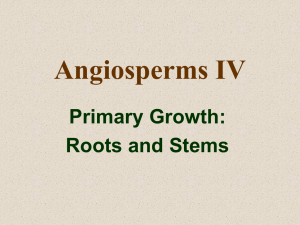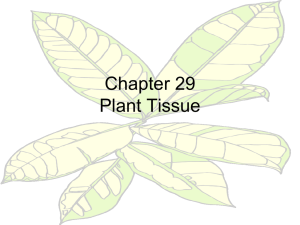ppt
advertisement
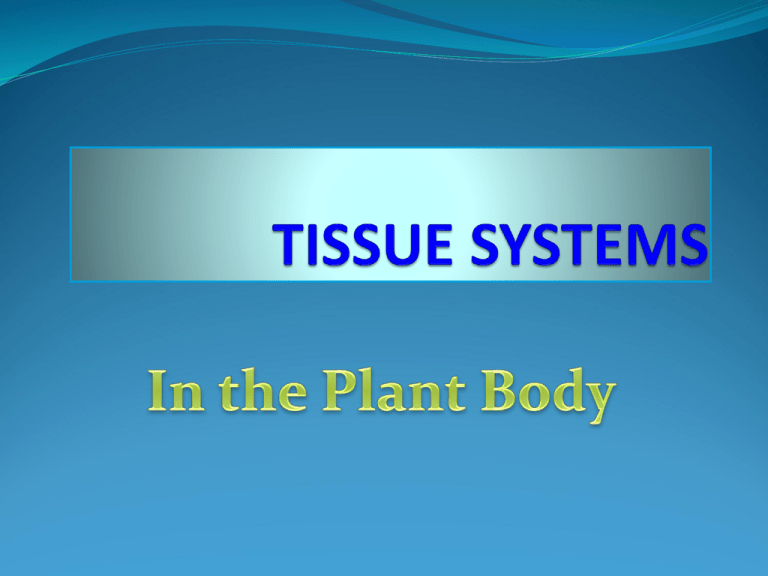
A section taken through any region of a typical plant body shows the presence of three tissue systems. Epidermal Tissue System Origin - It is a derivative of protoderm. It is represented by the epidermis and the associated structures, which are mainly involved in providing protection to the plant body. The epidermis is the outermost covering of the plant body. It is commonly described as the skin of the plant body. In the stem and the leaf, the epidermal cells are thick-walled and are meant for protection. In the leaf, there are two epidermal layers, one on each surface of the leaf. In the roots, the epidermal cells are thin-walled, since they are mainly involved in the absorption of water and mineral salts. In the root, the epidermal hairs are unicellular and are called root hairs. The root hairs penetrate between the soil particles to absorb water and minerals In the stem and the leaf, the epidermal hairs are involved in the secretion of some compounds Structure of a leaf CUTICLE PALISADE LAYER SPONGY LAYER VEIN AIR SPACES STOMATA How are palisade cells specialised? • Lots of chloroplasts, which contain chlorophyll to catch light energy. • Long and thin, so they pack closely together to collect as much light as possible. • They are at the top of the leaves, to get as much light as possible. How does the carbon dioxide get inside the leaf? The epidermis of the stem and the leaf is usually surrounded by a thin, covering called cuticle. It is formed by a waxy substance called cutin. It’s function is preventing excessive evaporation of water. Cuticle is absent in the root epidermis. stomata The epidermis of the leaf and herbaceous stem (green stem) contains numerous small openings called stomata. Each stoma is surrounded by a pair of modified epidermal cells called the guard cells. The stomata take part in functions such as transpiration, respiration and photosynthesis. Stomata are absent in the epidermis of the root and woody stem. Leaf Stomata: Allow Gas Exchange Guard cells with chloroplasts Stomata in Zebrina leaf epidermis Stoma Subsidiary cells Vascular Tissue System The vascular tissue system is a derivative of procambium. It is represented by the conducting tissues-xylem and phloem. These vascular tissues occur in the form of strands extending from one end of the plant body to another. These strands are known as vascular bundles or fascicles. In the leaf, the vascular bundles are known as veins. Vascular Tissue System The vascular bundles may sometimes enclose a piece of meristematic tissue called cambium, which brings about secondary growth in the bundles. When cambium is present, the vascular bundle is described as open and when the cambium is absent, the vascular bundle is described as closed. Vascular Tissue System A vascular bundle may contain either only xylem or only phloem or both. Xylem tissue is found in the vascular bundle in the stem. It is also found throughout the plant. Ground Tissue System It is a derivative of ground meristem. It is represented by the different regions in the plant body that are mainly involved in storage. In the cylindrical parts of the plant body such as root and stem, the ground tissue becomes differentiated into various regions. In a typical condition, following regions can be recognised in the ground tissue. Hypodermis Cortex Endodermis Pericycle Medullary rays Pith
